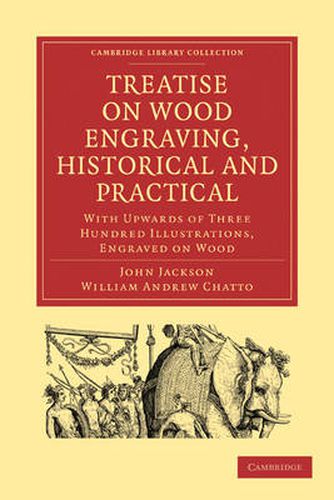Readings Newsletter
Become a Readings Member to make your shopping experience even easier.
Sign in or sign up for free!
You’re not far away from qualifying for FREE standard shipping within Australia
You’ve qualified for FREE standard shipping within Australia
The cart is loading…






A Treatise on Wood Engraving, Historical and Practical (1839), combines the practical knowledge of an engraver with the critical inquiry of an historian. Compiled and edited by William Andrew Chatto, an established author with an interest in woodcuts, the book was originally conceived by the wood-engraver John Jackson, who provided the book’s more than three hundred engravings. Roughly three quarters of the Treatise is concerned with the historical evolution of engraving, from the Egyptian hieroglyph stamps held at the British Museum through the masterful works of Albrecht Durer to the decline and reinvigoration of the art in the seventeenth and eighteenth centuries. Practical analysis permeates the text as a whole, with the final section explaining more fully how a block is chosen, cut, and even repaired. The book is therefore of interest to art historians, historians of the book, and even artist practitioners interested in nineteenth-century methods.
$9.00 standard shipping within Australia
FREE standard shipping within Australia for orders over $100.00
Express & International shipping calculated at checkout
A Treatise on Wood Engraving, Historical and Practical (1839), combines the practical knowledge of an engraver with the critical inquiry of an historian. Compiled and edited by William Andrew Chatto, an established author with an interest in woodcuts, the book was originally conceived by the wood-engraver John Jackson, who provided the book’s more than three hundred engravings. Roughly three quarters of the Treatise is concerned with the historical evolution of engraving, from the Egyptian hieroglyph stamps held at the British Museum through the masterful works of Albrecht Durer to the decline and reinvigoration of the art in the seventeenth and eighteenth centuries. Practical analysis permeates the text as a whole, with the final section explaining more fully how a block is chosen, cut, and even repaired. The book is therefore of interest to art historians, historians of the book, and even artist practitioners interested in nineteenth-century methods.